Collaborative Storytelling: From Marvel to Disney Animation and Looking Beyond to Star Wars
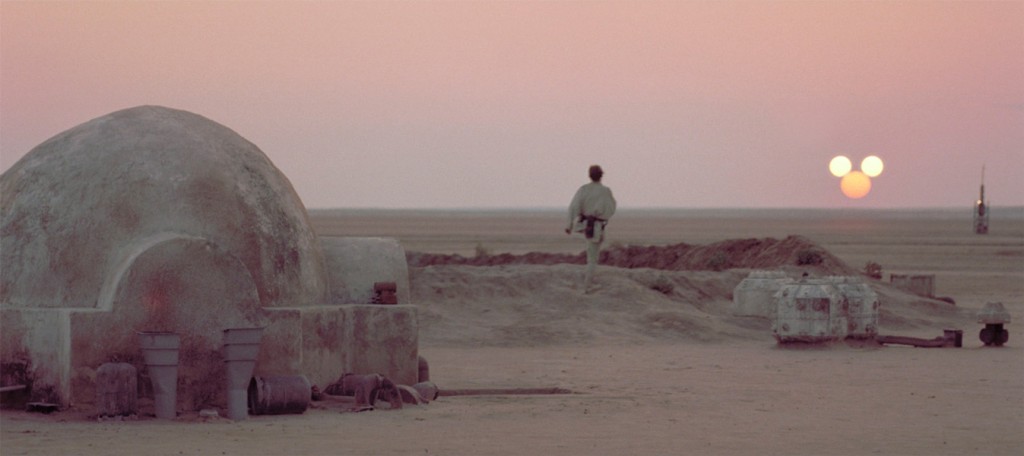
In a recent Full of Sith interview, Vanessa Marshall discussed with Bryan Young how the Star Wars movies helped her learn about archetypes and myth. Star Wars likely influenced most modern storytellers, from books and comics to television and film. Admittedly the franchise has inspired me to write plenty of non-fiction analysis and opinion pieces, and it also has flavored the stories of my own imagination. I learned quite a bit by listening to Expanded Universe novelists like Aaron Allston and Timothy Zahn, directors like Dave Filoni and Irvin Kershner, and ultimately visionary George Lucas.
The most important message I have taken away is that good storytelling is about taking risks and subverting expectations. I have seen the same sentiments expressed from storytellers outside Star Wars, including fan favorites Joss Whedon, Jane Espenson, and Gail Simone. Marvel’s and Disney Animation’s recent string of hits, from The Avengers and Iron Man 3 to Frozen and Captain America: The Winter Soldier, all required risk and trope smashing. For all appearances, Disney has embraced the idea that good storytelling is the driving force behind box office success, and that it takes teamwork and collaboration to root out the weaknesses in a story before delivering it to the fans.
The storytelling process is becoming more of an open book. If you want to learn a thing or two, there is plenty of information for an aspiring storyteller to absorb. As a Star Wars fan, I am wholly invested in the franchise getting it right. Hopefully Disney is passing along its corporate storytelling fairy dust to Lucasfilm and infusing it with a little Force nudge. Here are a few things from the Marvel and Disney Animation storytelling toolbox that might influence how Star Wars is made in the future.
The Might of Marvel
Last month, to coincide with the release of Captain America: The Winter Soldier, Business Week posted a feature “The Pow! Bang! Bam! Plan to Save Marvel, Starring B-List Heroes,” which provides insight into the rise of Marvel movies and the man credited with this superheroic effort, Kevin Feige. It has been four years since Disney purchased Marvel, minus the film rights to Spider-Man and the X-Men. Business Week notes, “At the time, it wasn’t hailed as a brilliant move. Disney’s stock price sank on news of the deal.” Feige, though, is a man with a plan, with “a map of films reaching far into the next decade on the wall” in his office. Marvel’s success has been attributed to Feige’s “special understanding of comics, fans, superheroes, and narrative.”
A Star Wars and Star Trek fan, Feige says “he’s a recent convert” to Marvel fandom, perhaps the most notable reminder to longtime Star Wars fans that not being there from the beginning doesn’t prevent a creator from understanding what fans want or need. On his own secret formula:
“I would hear people, other executives, struggling over a character point, or struggling over how to make a connection, or struggling over how to give even surface-level depth to an action scene or to a character. I’d be sitting there reading the comics going, ‘Look at this. Just do this. This is incredible.’”
For those of us looking forward to what will come from Star Wars, also purchased by Disney for $4 billion, gone are the days when George Lucas had a field of artists and designers at his beck and call simply to create costumes, character concepts, aliens, ships, and worlds. Disney isn’t likely to approve world-building of the extent and scope that was seen during the Prequel Trilogy. Why should they, when there are so many existing character, aliens, spaceships, and worlds sitting in their database?
 After failed attempts to get “Fox, Sony, and New Line not to screw them up by deviating from the original source material,” Feige decided to make his own studio in 2005. Marvel Studios pulled together a creative committee that included Feige; Alan Fine, president of Marvel Studios; Louis D’Esposito, co-president of Marvel Studios; and Dan Buckley, president of publishing; Joe Quesada, Marvel’s chief creative officer; and writer Brian Michael Bendis.
After failed attempts to get “Fox, Sony, and New Line not to screw them up by deviating from the original source material,” Feige decided to make his own studio in 2005. Marvel Studios pulled together a creative committee that included Feige; Alan Fine, president of Marvel Studios; Louis D’Esposito, co-president of Marvel Studios; and Dan Buckley, president of publishing; Joe Quesada, Marvel’s chief creative officer; and writer Brian Michael Bendis.
By their own admission, the creative committee has involved intense and passionate debates over storytelling choices. Feige was the one who insisted Captain America: The First Avenger be set in the 1940s. While the committee has disagreed to the point of shouting matches on some choices, apparently it agrees on what the Marvel movies must do: “The movies needed to please the hard-core comic book readers first. ‘Really, you have to start with the loyalists,’ says Quesada. ‘If the loyalists reject it, then we feel that everyone is going to reject it.’”
Disney obtained Marvel for its cast of characters and storytelling universe, but the company didn’t always concur with the studio’s choices. Feige kept making the key calls about Iron Man, Thor, and The Avengers, and in the end it has paid off. Success talks. Feige’s secret recipe is something that Disney has now thrown its full weight behind.
“All Paramount cares about is the distribution fee. Now that we distribute these movies, it’s not about a fee. It’s not even about box office. It’s about the entire entity doing well, which ultimately lifts the Disney stock.”
~ Bob Iger, Disney Chairman and CEO
Disney Animation: Infusing Pixar Into Fairy Tales
I found an unlikely resource for exploring storytelling in the Art of Tangled and Art of Frozen books. In the same way success for Marvel Studios can be traced to the influence of Kevin Feige, John Lasseter is the man behind the Disney Animation magic. From Jungle Cruise skipper to Chief Creative Officer of both Pixar and Disney Animation Studios, his early career highlights include being fired as a Disney animator before joining Lucasfilm, where he helped found Pixar. After the commercial and critical success of the Toy Story movies and Cars, Disney purchased Pixar in 2006 and elevated Lasseter to the position he now holds.
The fairy tale Rapunzel had been in concept development at Disney since 1937. Although passed over as an animated feature, Disney used the fairy tale in 1970 for a little long-playing record The Story of Rapunzel and in 1998 for a Disney’s Fairy Tale Theater with Minnie Mouse in the title role of Rapunzel. Disney Animation was still mulling the idea in the early 2000s, with several different angles considered, including more contemporary attitudes, a satirical tone, and a style described as 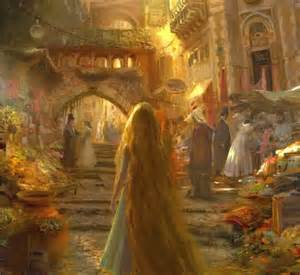 Rembrandt-meets-Ridley-Scott. In 2006 Lasseter and Ed Catmull took over. Storytelling partners Nathan Greno and Byron Howard were fascinated with the “Disneyland ideal,” and the story and art concepts shifted to more Cinderella-like. While Disney Animation wasn’t exactly mimicking Feige’s approach of getting into the original source, it was returning to Disney’s original roots, studying movies Cinderella and Pinocchio as well as architectural features of the Disneyland theme park. Interesting then that much of the talk of Star Wars’ future includes mention of A New Hope and The Empire Strikes Back.
Rembrandt-meets-Ridley-Scott. In 2006 Lasseter and Ed Catmull took over. Storytelling partners Nathan Greno and Byron Howard were fascinated with the “Disneyland ideal,” and the story and art concepts shifted to more Cinderella-like. While Disney Animation wasn’t exactly mimicking Feige’s approach of getting into the original source, it was returning to Disney’s original roots, studying movies Cinderella and Pinocchio as well as architectural features of the Disneyland theme park. Interesting then that much of the talk of Star Wars’ future includes mention of A New Hope and The Empire Strikes Back.
Another parallel in Tangled’s early creation process was a commitment to the smaller details that make the cinematic universe credible. Like with superhero movies, the audience knows they are observing a fictional reality. Marvel’s cinematic style aspires to create a world that is inviting, and the revised approach to Tangled and the approach taken with Frozen aligned with this mentality.
Without Tangled’s success, Frozen might still be sitting on a shelf. The original source material is an episodic tale. As with Tangled, which is based on a dark fairy tale, Frozen creators were challenged with finding a way to translate the fairy tale’s concept to film. The children in the original story shifted to young adults; then they were made sisters, one heroine and one villain. This evolution resulted in the Sister Summit. Lasseter explains: “It was really important to be authentic. So we brought together women from all over Disney Animation who grew up with sisters, and they start talking about their relationships.” From this event, the story evolved from hero versus villain to, as described by director Jennifer Lee, a tale of “two sisters saving each other.”
Lasseter also took the Frozen team to observe the Pixar Brain Trust, the group that reviews pitches and works in progress.
“Although they’re brutal in the notes sessions, there’s a sense that it’s all to make the film better. Everyone remains friends, though the discussions can get quite heated. We speak up when we think something can be stronger.”
~ Peter Del Vecho, producer
In the chapter “Family Affair” in Art of Frozen, the story artists explain the storytelling process. For the story artists, the old adage “show not tell” is key. They aren’t just creating a script, but using their art to visually depict emotions and relationships, while also taking the characters and the audience on a journey.
“In story, you’re asked to give so much of what you are personally.”
~ Chris Williams
“The first time you pitch something or voice your opinion is very nerve-racking… You need that safe room environment. That doesn’t mean we accept everything. If it’s not funny, we won’t laugh. We’ll applaud the effort.”
~ Norman Lemay
“[Y]ou pull from your life experiences, you put that in front of everybody…You feel very vulnerable.”
~ Fawn Veerasunthorn
Not only are the story artists opening themselves up to vulnerability, they must do so with Lasseter in the room, who head of story Paul Briggs describes as “just another one of the story guys.”
Lessons To Pass On To A New Generation Of Storytellers
In order for the Pixar, Disney Animation, and Marvel teams to work collaboratively, they must learn to trust one another. They aren’t the only examples of storytellers using vulnerability as a means to improve their craft. Many authors work in writing circles, and these circles are generally selective as the writers open themselves up to criticism.
What makes the process effective is understanding that the criticism isn’t about the individual, but rather the art form, much like an athlete would be critiqued to improve his performance. In my own experiences as a writer, I’ve found it is important not just to pick alpha-readers for their sharp eye and storytelling sensibilities, but also the way they deliver criticism. Sometimes the creative process requires the storyteller to push back or exercise certitude in a decision that will pay off later, as Feige has been known to do. The success of the Original Trilogy, Tangled, Frozen, and recent Pixar and Marvel offerings drive home the point that stories are better when done in collaboration.
When speaking at Loyola Marymount University a few weeks ago, Disney Studios chairman Alan Horn deflected talk of Star Wars Episode VII casting back to talk of the screenplay.
“It’s all about the screenplay. It has to be screenplay, screenplay, screenplay.”
If there was one thing that really hampered the Prequel Trilogy, the screenplay was it. George Lucas juggled numerous balls on those three movies, including introducing quite a bit of new movie-making technology. A New Hope had several script polishes, as George Lucas sought out advice from his peers. Fan-favorite The Empire Strikes Back benefited from the experience of its director Irvin Kershner, original screenwriter Leigh Brackett, and the talent of screenwriter Lawrence Kasdan. Harrison Ford and Carrie Fisher, a respected writer in her own right, have spoken over the years of polishing up the dialogue to ring more true to the characters. Just recently during a Reddit AMA, Ford called movie making “a real collaborative process at its best.”
 While my writer-self is interested in the process as a tool to improve my own storytelling, my fan-self hopes the Star Wars Story Group will be the tool to elevate Star Wars. Much of the recent storytelling from the books and comics have been more of the same, and unfortunately rode the tone of the last movie onscreen. Even Lucas warned his protégé Dave Filoni about falling into the trap of repetition as opposed to innovation. In the absence of more information, the cast reveal last week suggested, at least for female fans and their supporters, it was repetition rather than innovation when it came to casting women in Star Wars. There are positive signs for female fans too, like the recent press push around the characters Hera and Sabine for Star Wars Rebels. But when you look at the Episode VII production team, which has only one woman, as well as the Star Wars Rebels executive production team and the recent slate of authors for the kids and adult novels – essentially the people making the most important storytelling decisions – the casting ratio for women in Episode VII looks good by comparison.
While my writer-self is interested in the process as a tool to improve my own storytelling, my fan-self hopes the Star Wars Story Group will be the tool to elevate Star Wars. Much of the recent storytelling from the books and comics have been more of the same, and unfortunately rode the tone of the last movie onscreen. Even Lucas warned his protégé Dave Filoni about falling into the trap of repetition as opposed to innovation. In the absence of more information, the cast reveal last week suggested, at least for female fans and their supporters, it was repetition rather than innovation when it came to casting women in Star Wars. There are positive signs for female fans too, like the recent press push around the characters Hera and Sabine for Star Wars Rebels. But when you look at the Episode VII production team, which has only one woman, as well as the Star Wars Rebels executive production team and the recent slate of authors for the kids and adult novels – essentially the people making the most important storytelling decisions – the casting ratio for women in Episode VII looks good by comparison.
Obviously Kathleen Kennedy, J.J. Abrams, and Lawrence Kasdan are part of the storytelling equation. Kennedy has a company to helm, which suggests she will have more of an oversight role. She has been in the business for a long time and has earned the respect of her peers, and by way of that respect the public perception seems to lean that direction too. Abrams has produced quite a breadth of material that speaks to instincts that tend to hew in the right direction – with the notable exception of Star Trek Into Darkness. The movie failed on so many levels, but specifically in regards to its female characters Nyota Uhura and Carol Marcus, who had definitive blueprints from the original source material on how to portray women well. Abrams has earned wariness since his announcement as Episode VII’s director.
Last time, Zoe needed to wear underwear, and this time it was Alice Eve’s turn. You know, it’s a rather large male fanbase, and JJ wanted to appeal to that.
~ Michael Kaplan, costume designer for Star Trek Into Darkness and Episode VII
It might be to the benefit of Star Wars if Abrams accepts his directorial shortcomings in that movie; it wasn’t just the female characters who suffered from his direction. Into Darkness went for epic film moments, but it didn’t give the main characters or even the plot points compelling reasons to get to those places. Kasdan is a master at creating motivation for the plot to progress, so hopefully Abrams and Kasdan will complement each other in that regard. At the very least, Horn seems to think they have. The takeaway from Marvel’s and Disney Animation’s process, though, is that it is not just screenplay but costume design and worldbuilding, every little detail, that weighs into the equation.
If Abrams has an Achilles Heel, it is his philosophy of the Mystery Box. Even as a kid, movie-making was never a mystery to Abrams – but it seems he wishes it had been. That is why he never opens the mystery box from his childhood. He doesn’t express empathy for fans that some of his successful counterparts at Marvel and Disney Animation do. As an adult, I discover something new every time I watch a Star Wars movie. Star Trek Into Darkness illustrates an important storytelling point: The mystery doesn’t come from hiding the ball about the movie on the front end; it comes from crafting characters and events so well that they resonate with the audience enough that the audience walks out of the theaters still thinking about the movie, and then they continue to think about it for years to come. The Mystery Box hype surrounding Episode VII hones the focus on Abrams as the captain of this enterprise. Just like the storytellers, fandom experiences vulnerability and puts their hearts in the hands of the storytelling team. That is why trust is such a critical part of the franchise-fan bond. Right now, Abrams isn’t coming off as a Feige or Lasseter.
The question remains: how much of the story is coming from J.J. Abrams and Lawrence Kasdan, and how much is part of a collaboration with the Story Group? How vulnerable has the screenwriting duo become to ensure Episode VII is the best story possible for the diverse fanbase that supports Star Wars?
Tricia Barr took her understanding of brand management and marketing, mixed it with a love of genre storytelling, and added a dash of social media flare to create FANgirl Blog, where she discusses Star Wars, fandom, and strong female characters. She also writes about Star Wars for Random House’s science fiction and fantasy blog Suvudu.com and Star Wars Insider magazine and is a contributor for Her Universe’s Year of the Fangirl. Her FANgirl opinions can be heard on the podcasts Assembly of Geeks and RebelForce Radio Presents Fangirls Going Rogue.
Tricia has completed her first novel, Wynde – a military science fiction with a fantastical twist that features heroines Vespa and Gemini. For excerpts and tales of her adventures in creating a fictional universe, hop over to TriciaBarr.com.
For updates on all things FANgirl follow @FANgirlcantina on Twitter or like FANgirl Zone on Facebook. At times she tries the Tumblr.
- Hyperspace Theories: SKELETON CREW Ahoy! - December 29, 2024
- Hyperspace Theories: WICKED Part I Rises to the Moment - December 6, 2024
- Columbia’s Vader™ Collection Launches Dec 5 - November 27, 2024

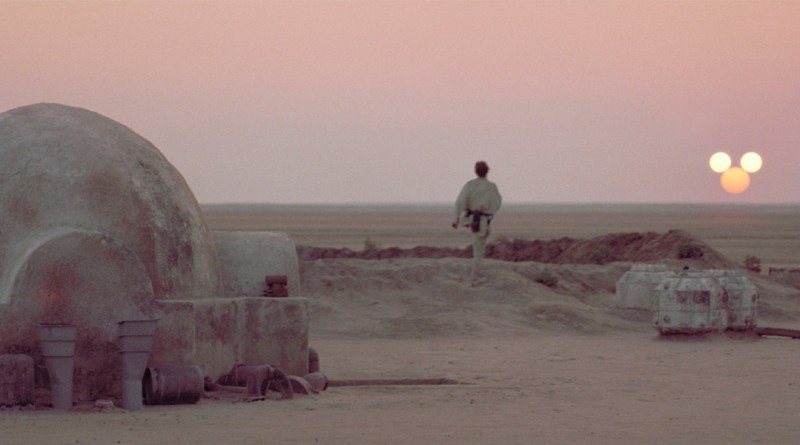








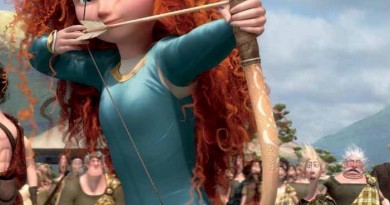
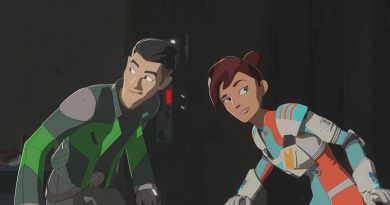
Pingback:Did Geena Davis Convince J.J. Abrams to Gender-Swap an Episode VII Character? « fangirlblog.com